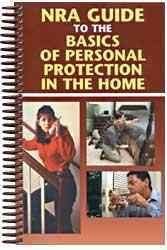Caroline Light’s provocative and original book, Stand Your Ground: A History of America’s Love Affair With Lethal Self Defense, is making its official debut next week and you can pick up a copy at (where else?) Amazon but I’m sure it will be at your independent bookseller as well. Its appearance, incidentally, will no doubt coincide with the beginning of another attempt by Gun-nut Nation to push a bill through Congress that will let anyone with a concealed-carry license carry his gun through all 50 states.
The idea that a gun license should be no different than a driver’s license has been a cherished gun-nut dream since then-Senator Larry Craig came out of his men’s room stall to speak in favor of a national, concealed-carry bill on the Senate floor. The bill is routinely filed every two years, it has always been just as routinely ignored, but guess who’s sitting in his office at 1600 Pennsylvania Avenue just waiting to sign such a bill into law? And what better way to rev up his sturm und drang base and take their minds off the fact that he can’t really get anything done than to announce that they can now run around anywhere in the United States carrying their guns?
And this is what concealed-carry is really all about, namely, playing out a fantasy that I can protect myself from all those street thugs and bandidos because I’m carrying a gun. The fact that most of the folks who have concealed-carry licenses happen to live in places with little or no violent crime is entirely beside the point. I really loved it when Trump-o said he could stand on the 5th Avenue sidewalk, shoot someone down and his supporters would still give him their votes. If he did, it would be the first time that a violent crime was committed on 5th Avenue since I don’t know when. But that didn’t stop Trump from bragging about how he allegedly walks around carrying a gun.
Caroline Light’s book isn’t about concealed-carry per se, it’s really a study of a peculiarly American legal phenomenon known as Stand Your Ground (SYG.) Because other Western countries may make it more difficult to get a concealed-carry license, but they are issued if you can show cause. On the other hand, SYG laws are a peculiarly American phenomenon, and Professor Light does a first-rate job of explaining how and why our ‘love affair’ with lethal, self-defense departs so dramatically from Common Law traditions which, in England and other British colonial zones, don’t support the SYG legal position at all.
When the Supreme Court gave Americans a Constitutional protection in 2008 to keep handguns in the home for self-defense, the majority based its reasoning on a rather arbitrary analysis of the phrase ‘keep and bear arms.’ But according to Scalia, who wrote the majority opinion, it also reflected an American ‘tradition’ of using guns, particularly handguns, for personal defense. What Light shows is that from the very beginnings of the country, the earliest legal cases which codified SYG involved physical disputes that were settled with a gun. I’m not sure that we yet fully understand exactly how and why guns proliferated in the United States, but the connection between gun ownership and the legal sanction of SYG is made very clear in this book.
The problem we have today, however, is that with so many guns floating around, what to the shooter may be a defensive act could be an offensive act to the person who gets shot. Recently a 60-year old St. Louis man was found not guilty of assault after he shot and killed a 13-year old kid at a distance of 70 feet. The teenager was running away after breaking into the man’s car, but under Missouri law, since the man felt ‘threatened,’ he had the right to yank out his gun. What kind of country do we live in where something like this can occur? Some answers to that question are provided in Caroline Light’s new and important book.
 This time, however, I want to look at the issue which is somewhat tangential to Professor Light’s primary concern, but nevertheless must be addressed. At the same time that states began passing SYG laws, they also began easing restrictions on the ability of citizens to walk around with guns, two legal developments that are promoted vigorously by Gun-nut Nation, and which may set the legislative gun agenda on Capitol Hill in the Age of Trump.
This time, however, I want to look at the issue which is somewhat tangential to Professor Light’s primary concern, but nevertheless must be addressed. At the same time that states began passing SYG laws, they also began easing restrictions on the ability of citizens to walk around with guns, two legal developments that are promoted vigorously by Gun-nut Nation, and which may set the legislative gun agenda on Capitol Hill in the Age of Trump.


Recent Comments